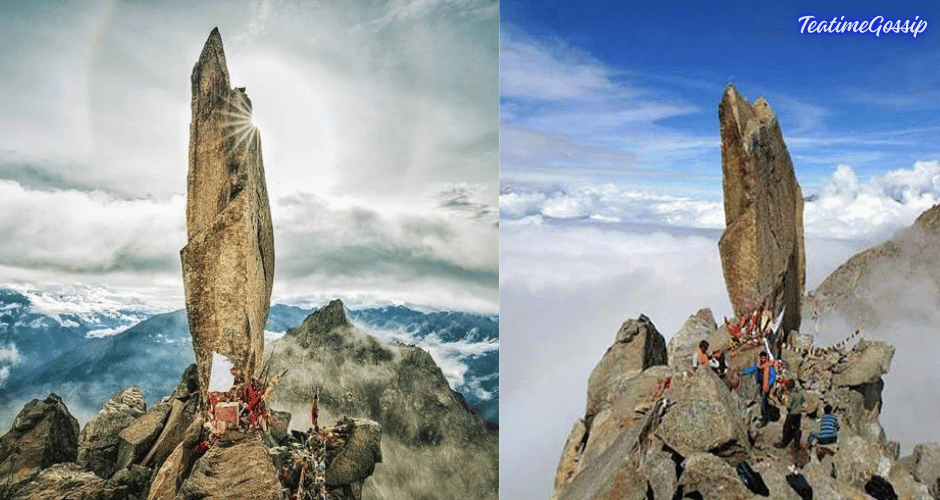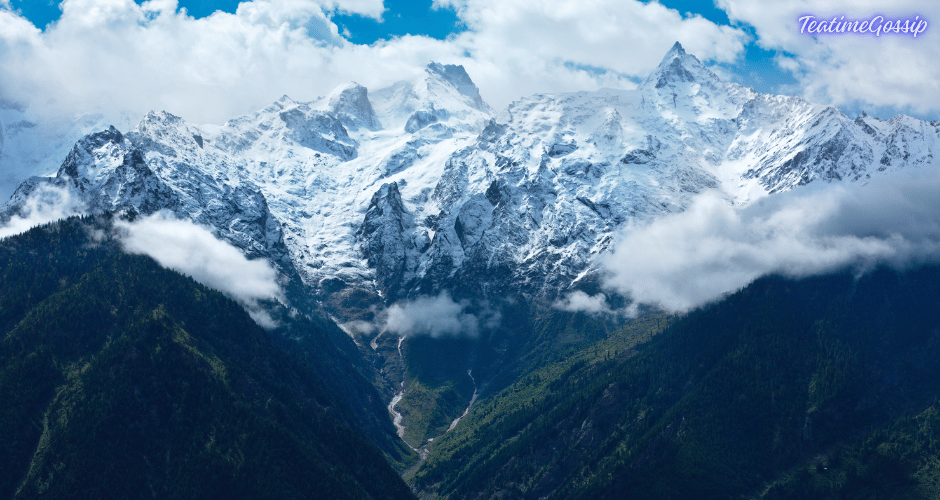Kinnaur Kailash Yatra: A Journey to the Sacred Abode of Lord Shiva

Kinnaur Kailash Yatra is a revered pilgrimage trek to the Kinnaur Kailash mountain in the Kinnaur district of Himachal Pradesh, India. The mountain is sacred to Hindus, as it is believed to be the abode of Lord Shiva. The trek is known for its challenging terrain and spiritual significance, attracting pilgrims and adventure seekers alike. The journey offers not only a test of endurance but also a chance to experience the serene beauty of the Himalayas and the deep cultural heritage of the region.
Geographical and Cultural Significance
Kinnaur Kailash stands at an altitude of about 6,050 meters (19,849 feet) and is one of the most iconic peaks in the region. The trek takes pilgrims to the Kinnaur Kailash Shivling, a natural rock formation resembling a Shiva Lingam, which changes colour as the day progresses. This 79-foot Shivling is considered one of the major highlights of the trek and holds deep religious significance.
The region is rich in mythological lore and is believed to be one of the winter abodes of Lord Shiva and Goddess Parvati. The locals also link the area with the Pandavas from the Mahabharata, who are said to have roamed these hills during their exile.
The Trekking Route
The Kinnaur Kailash Yatra begins from the village of Tangling, located near Reckong Peo, the administrative center of the Kinnaur district. The trek is known for its steep and rugged paths, requiring good physical fitness and acclimatisation. The initial part of the trek involves a climb through dense forests and rocky terrain, leading up to the base camp known as Ganesh Park.
From Ganesh Park, trekkers face a challenging ascent to the Parvati Kund, a small sacred lake. The final stretch involves a steep climb to the Kinnaur Kailash Shivling, where pilgrims offer prayers and seek blessings. The trek is typically undertaken over a span of 2-3 days, with the route covering a variety of landscapes, from lush greenery to rocky outcrops and snow-covered paths.

How to reach Kinnaur Kailash
Reaching Kinnaur Kailash involves a combination of road travel and trekking. Here’s a detailed guide on how to reach this sacred pilgrimage site:
1. Reaching Kinnaur by Road
The journey to Kinnaur Kailash begins with reaching the Kinnaur district in Himachal Pradesh. The primary route to Kinnaur is via the Hindustan-Tibet Road (National Highway 5).
From Delhi or Chandigarh:
- By Car or Taxi: You can hire a taxi or drive to Kinnaur from Delhi (approximately 570 km) or Chandigarh (approximately 350 km). The route typically passes through Shimla, Rampur, and Reckong Peo.
- By Bus: There are Himachal Pradesh State Transport (HRTC) buses and private buses that operate from Delhi and Chandigarh to Reckong Peo, the district headquarters of Kinnaur.
Travel Tips:
- The roads in Himachal Pradesh can be narrow and winding, so it is advisable to hire experienced drivers or travel with reputable transport services.
- The best time to visit is during the summer months (May to September) when the roads are clear and the weather is favourable.
2. Trekking to Kinnaur Kailash
Base Village – Tangling: Once you reach Reckong Peo, the next step is to get to Tangling, a small village that serves as the starting point for the trek to Kinnaur Kailash. Tangling is located approximately 7 km from Reckong Peo.
Trek Route:
- Tangling to Ganesh Park: The trek begins with a steep climb from Tangling to Ganesh Park, passing through forests and rocky terrain. Ganesh Park is the base camp where trekkers typically rest before the final ascent.
- Ganesh Park to Parvati Kund: From Ganesh Park, trekkers proceed to Parvati Kund, a small glacial lake that holds religious significance.
- Parvati Kund to Kinnaur Kailash Shivling: The final stretch involves a challenging climb to the Kinnaur Kailash Shivling, the primary pilgrimage site. This part of the trek is the most strenuous due to the high altitude and rocky path.
Trek Duration and Preparation:
- The trek usually takes 2-3 days, depending on the trekker’s pace and weather conditions.
- Trekkers should be well-prepared with appropriate gear, including warm clothing, sturdy boots, and trekking poles. Adequate acclimatisation is essential to prevent altitude sickness.
3. Important Considerations
- Permits: It’s advisable to check if any permits are required for trekking in the region, especially for foreign nationals.
- Guides: Hiring a local guide is recommended for navigating the challenging terrain and for safety.
- Health and Safety: Trekkers should be physically fit and carry necessary medications. It’s important to stay hydrated and be aware of the symptoms of altitude sickness.

Preparation and Challenges
The Kinnaur Kailash Yatra is not just a test of spiritual devotion but also of physical endurance. Trekkers need to prepare well in advance, focusing on fitness training and proper acclimatization to avoid altitude sickness. Essential gear includes warm clothing, trekking poles, sturdy footwear, and sufficient food and water supplies, as amenities are limited along the route.
The best time to undertake the trek is during the summer months, from July to September when the weather is relatively stable. However, trekkers must still be prepared for sudden weather changes and cold temperatures, especially at higher altitudes.
Spiritual and Cultural Experience
The Kinnaur Kailash Yatra offers a unique spiritual experience, as trekkers immerse themselves in the serene and sacred atmosphere of the Himalayas. The trek is often accompanied by chanting, prayers, and rituals performed by pilgrims, adding to the mystical aura of the journey. The local Kinnauri culture, known for its rich traditions and warm hospitality, further enriches the experience.
Conclusion
The Kinnaur Kailash Yatra is more than just a trek; it is a spiritual pilgrimage that connects devotees with the divine presence of Lord Shiva in one of the most beautiful and challenging terrains in India. The journey offers a profound sense of peace and accomplishment, making it a cherished experience for those who complete it. Whether one undertakes the trek for religious devotion or the love of adventure, Kinnaur Kailash leaves an indelible mark on the hearts and minds of its visitors.